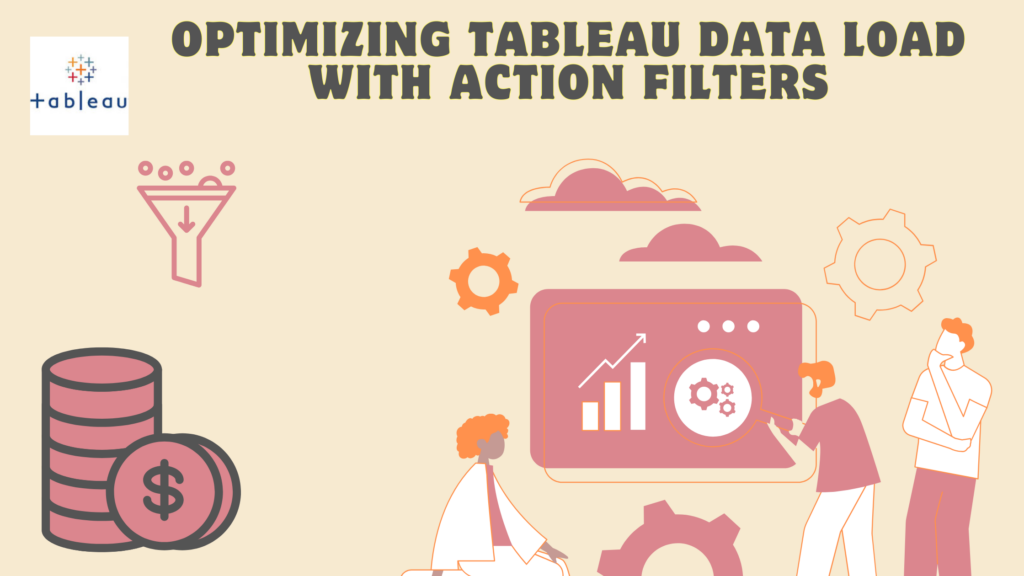Dashboard Action
A dashboard action is an interactive element on a Tableau dashboard where users interact with your visualizations by selecting marks, hovering, or clicking a menu, and the actions you set up can respond with navigation and changes in the view.
Tableau Action types
The different types of actions below:
Filter: Use the data from one view to filter data in another to help guide analysis.
Highlight: Call attention to marks of interest by colouring specific marks and dimming all others.
Go to URL: Create hyperlinks to external resources, such as a web page, file, or another Tableau worksheet.
Go to Sheet: Simplify navigation to other worksheets, dashboards, or stories.
Change Parameter: Let users change parameter values by directly interacting with marks on a viz.
Change Set Values: Let users change the values in a set by directly interacting with marks on a viz.
In this article, we will discuss Filter action in tableau.
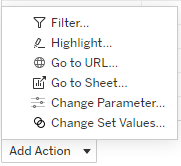
Action Filters
Action Filters in Tableau allow users to interact with visual elements dynamically. By defining actions, such as clicking or hovering over specific data points, users can trigger changes within the dashboard without reloading the entire dataset. This functionality not only enhances user engagement but also optimizes performance by loading data on demand.
Ex. Scenario: Clickable Table Chart for Detailed Insights
Consider a scenario where you have a Tableau dashboard displaying sales data across various regions and product categories. You want to provide users with a summary view in a table chart, enabling them to click on a specific region or category to delve deeper into detailed sales information.
Step-by-Step Implementation
1. Prepare Your Data Source
Ensure your dataset contains relevant fields, such as Region, Category, and Sales details you want to showcase in the detailed view. Here I am taking the superstore dataset.

2. Create the Summary Table Chart
Design a table chart in Tableau displaying the summarized data, showcasing regions and categories with their respective sales figures. This serves as the starting point for users

3. Design the Detailed View Sheet:
Create a separate sheet in Tableau to display detailed information. Include fields like Date, sub-category, Product Details, and Sales figures for the selected region or category.

4. Place the summary & Detailed View on the Dashboard
Now create a dashboard with two sheets we created, so that we can create an action in the dashboard which helps us to drill down the sales details. Without action, the dashboard will look like below.
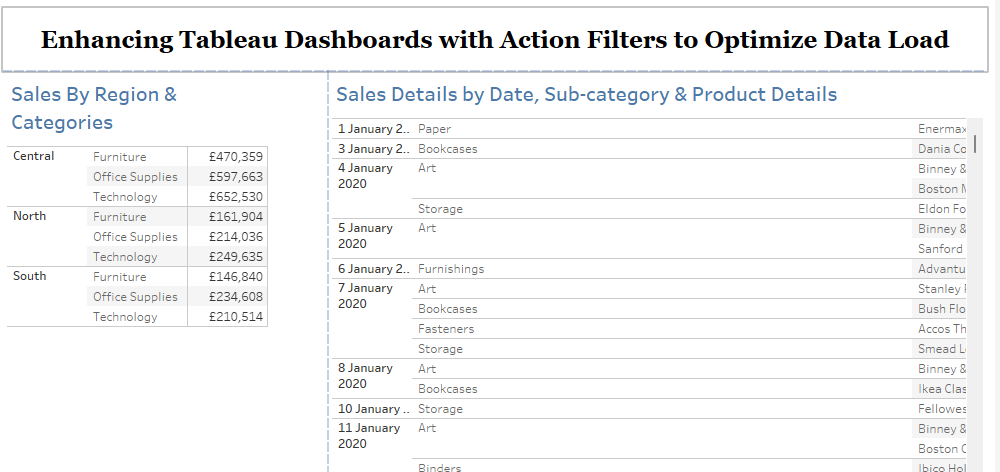
5. Define & Set an Action Filter:
- Click on the “Dashboard” menu and select “Actions.”
- Click “Add Action” and choose “Filter.”
- Name the action appropriately (e.g., “Details on Click”).
- Specify the source sheet (the summary table chart) and the target sheet (where detailed information will be displayed).
- In the Action dialog box, choose “Select” as the run action, allowing users to click on the summary table.
- Define how the action should affect the target sheet. Select “Only Relevant sheets” to filter data dynamically based on user interaction.
- Select “Exclude all values” on clearing the selection to reduce data load.
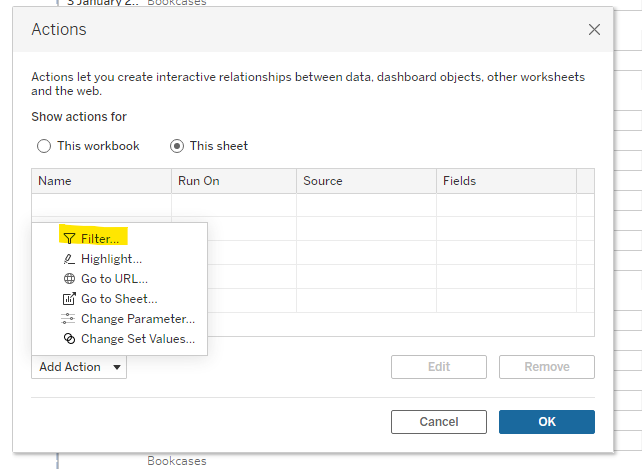
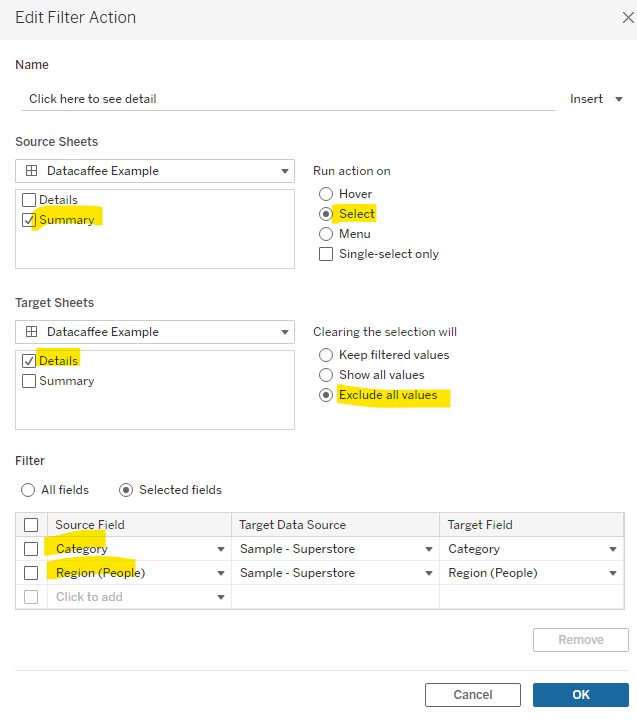
6. Test and Refine
Validate the functionality by interacting with the summary table. Click on different regions or categories to ensure the detailed view updates accordingly. Adjust formatting or layout as needed for a seamless user experience. The summary table will be shown initially and if you select the row, the detailed data will be shown on de-select the table will be auto-cleared
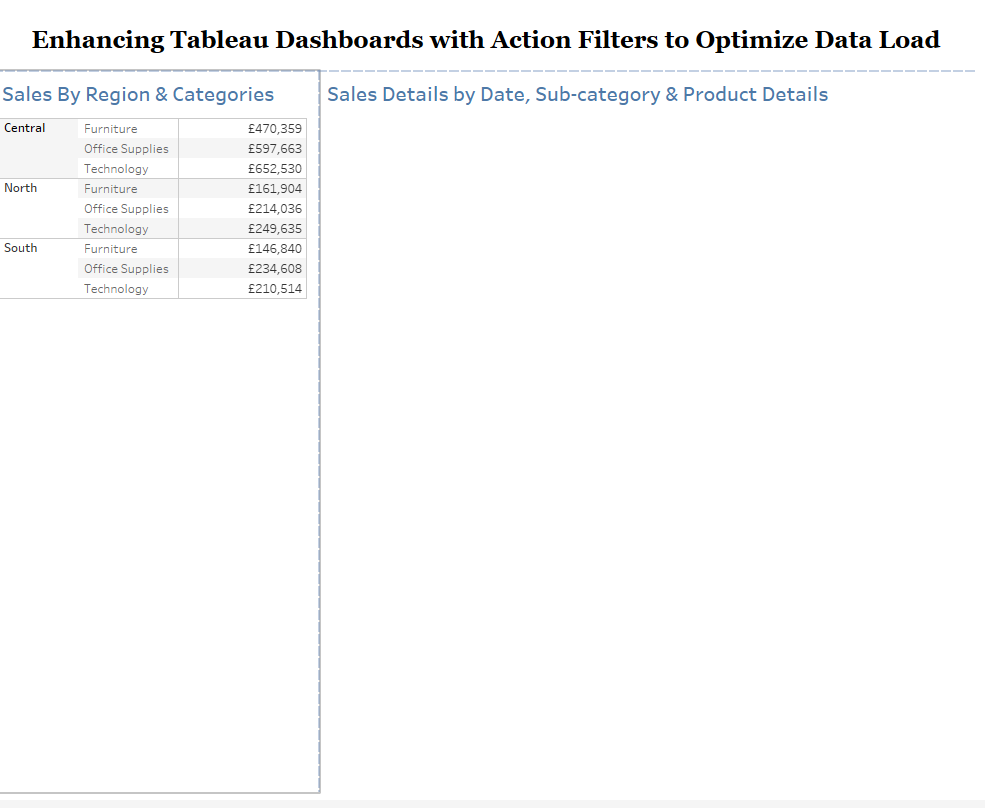

Benefits of Action Filters for Data Load Optimization
Implementing Action Filters offers several advantages:
- Reduced Data Load: Rather than loading all detailed information at once, Tableau fetches data dynamically upon user interaction. This significantly reduces initial load times and enhances dashboard performance, especially with large datasets.
- Focused User Experience: Users can explore specific details they’re interested in, maintaining focus and relevance within the dashboard.
- Enhanced Interactivity: Action Filters improve user engagement by allowing them to interact with the data directly, fostering a deeper understanding of the insights presented.
Conclusion
Tableau’s Action Filters serve as a powerful tool to optimize dashboard performance while offering users an interactive and focused experience. By implementing action filters strategically, such as enabling users to click on a table chart for more detailed information, you can strike a balance between data accessibility and load efficiency.
Author
-

Tableau Certified Data Analytics professional with 7+ years of overall IT experience and 4 years of experience in analytics. Completed Post graduate program in Data science and Engineering from Great Lakes. Having good knowledge in Tableau, PowerBI, SQL and Python. Member of Data Visualization Society(DVS). Currently working as Data Analyst in Elsevier, a publishing and information analytics company.
View all posts

